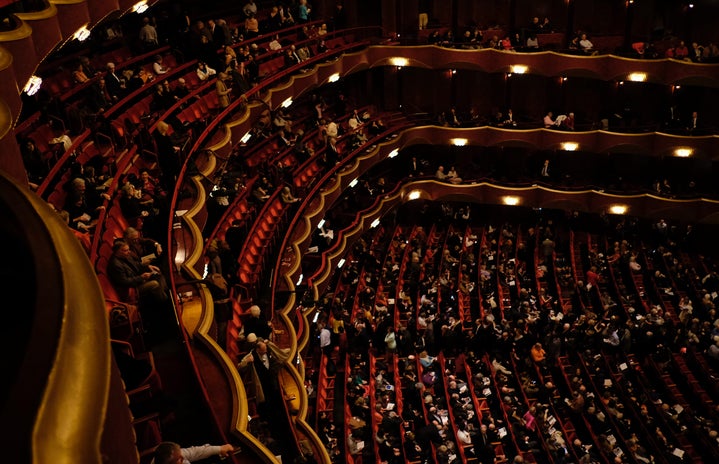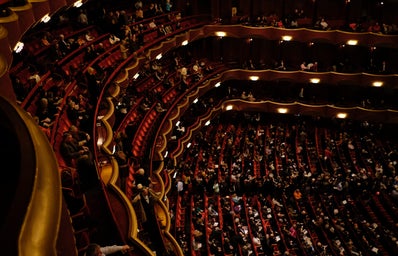There is something about anime that often draws in people who aren’t straight and/or cis, especially young people. I don’t quite know what that is. But for whatever reason, young LGBTQ people are being exposed to this media that often portrays LGBTQ characters in incredibly problematic ways. It’s harmful to have your only exposure to characters like you be in works that don’t do them justice. And as someone who was once a young person trying to figure out her sexual orientation and watching anime at the same time, it’s frustrating and discouraging.
Anime is notorious for queer baiting, which is the hinting at but never realizing of a LGBTQ romance. In the least harmful cases, the romance is just ignored; in the worst cases, it may be made a joke. One studio that’s particularly notorious for doing this is Kyoto Animation. This studio has produced notable LGBTQ-adjacent works like Free! Iwatobi Swim Club, Sound! Euphonium, and Miss Kobayashi’s Dragon Maid. These series feature a lead with a close relationship with a member of their same gender, like Reina and Hibike in Sound! Euphonium and Kobayashi and Tohru in Dragon Maid. Neither show features outright rejection of the homosexual romance, instead opting to largely ignore it. But no show, I would argue, is as notorious for queer baiting as is Free! Iwatobi Swim Club. A so-called “reverse harem,” the show features a cast of well-muscled high school boys who spend their days swimming and occasionally slamming each other against walls with a lot of sexual tension. Like the aforementioned shows, there is not necessarily outright rejection of any romance, simply a continuation of gayer and gayer scenes in which no one ever admits their feelings. This is preferable to outright mockery of LGBTQ relationships, of course (looking at you, Supernatural and Sherlock), but it is by no means ideal. This kind of storytelling may draw LGBTQ fans to a series, but ultimately leaves them wanting and disappointed.
This is not to say that no anime ever features any LGBTQ relationships. On the contrary, Free! is somewhat of a sanitized version of the real gay anime – yaoi. Originally a manga genre, yaoi portrays homosexual relationships between men. It is aimed at adolescent girls, and often written by women. Yaoi may be anything from the sexual tension of Free! to outright porn. When I was in my early high school days and deeply closeted even to myself, I tried to like yaoi, so I unfortunately have some first-hand experience with how problematic it is. Yaoi is fraught with so-called “good rape,” a sort of “boys will be boys” trope in which the seme (top) is unable to control his desire for the uke (bottom) and rapes him. This is seen as an ultimately positive experience, an act of love in which the uke eventually comes around and the seme is usually seen as loving and caring afterward. It’s pretty fucked up. Maiden Rose is a perfect example of this trope.
Yaoi’s lesbian equivalent is yuri, but the two have fairly different modes of portraying homosexual relationships. Rather than the brutality of yaoi, yuri is often gentler and more sanitized – but it is nearly always for the male gaze. Fraught with fan service and busty women, yuri is often awkward-feeling from a woman’s point of view. Valkyrie Drive is an example of this weirdly-sexualized genre, with tits that defy gravity and women who turn into weapons when they get turned on. Other shows, like Yurikuma Arashi, have less visual fan service, but still have bizarre plots like gay bears from space who arrive on Earth and decide to seduce a human girl (yes, that’s the actual plot of Yurikuma). Even Citrus, recently adapted to an anime, is not perfect. While the romance at first glance is sweet and caring, the characters are adopted siblings. Way to go, Japan.
The topic of age in anime is one far too complex to delve into completely for this article, but needless to say these shows do not always feature characters who are of age. The age of consent in Japan is thirteen, and characters do usually hit that mark, but it’s still weird and creepy a lot of the time.
One way fans have dealt with this problematic content is by creating their own works. Archive of Our Own, a fanfiction website, boasts over 4,588,000 works. There is no way to search for only LGBTQ works, but the proportion of works that deal with relationships that aren’t canon or didn’t received adequate attention in canon is vast. In fanfiction and other works, fans are able to explore characters that they love in relationships that feel truer to life. Fanfiction is not without its faults, but it can be a home for these relationships that receive so little attention in media.
However, there may be hope on the horizon. Yuri on Ice!, a popular anime about figure skating boys, featured what many theorize was a kiss scene. While the positioning of arms as they hug block the boy’s mouths, a kiss seems likely based on the positioning of the boys’ faces. Is this a sign that we will soon see canonical LGBTQ relationships in non-pornographic work? That remains to be seen.



